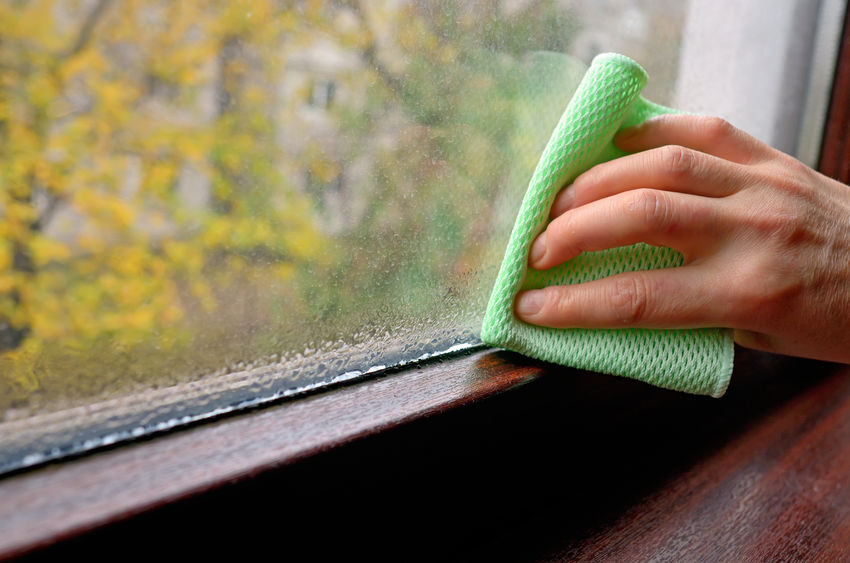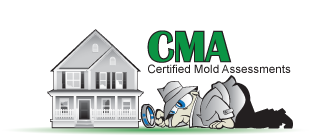 Mold grows in different sizes, shapes, and colors, and has always been a common problem in most homes and commercial buildings. Extreme exposure to mold causes serious health effects that normally range from minor annoyances to serious health complications. Molds can travel from one place to another as tiny spores because they are very light and can easily be blown into the interiors. Mold can also be transported into your home through clothing or sticking on the fur of your pets.
Mold grows in different sizes, shapes, and colors, and has always been a common problem in most homes and commercial buildings. Extreme exposure to mold causes serious health effects that normally range from minor annoyances to serious health complications. Molds can travel from one place to another as tiny spores because they are very light and can easily be blown into the interiors. Mold can also be transported into your home through clothing or sticking on the fur of your pets.
Although molds may be present in a home, they are available in different species. Some of them are dangerous when disturbed and cause serious health effects while others are considered harmless to the human environment. In this article, we will be looking at some types of mold in a home and where they grow.
Here are the top 3 types of mold found in a home:
1. Stachybotrys
This type of mold is commonly referred to as black mold because of its color and high levels of toxicity. It is considered a primary mold because it usually dominates other types of mold that have already established a colony. It is a type of mold that releases toxins, causing allergic reactions. It is black or dark green in color and is designated by its slimy texture.
Where does it grow?
Stachybotrys thrives in wet and damp areas because of the high levels of humidity. It requires cellulose material to grow such as paper, cardboard, woods, wicker or hay. This type of mold is most common in damp, warm and humid areas of a home or a commercial building. One of the places that are more susceptible to Stachybotrys is the basement. This is because it creates a perfect environment for mold growth in its dark, hidden areas. Leaking roofs or exploding water pipes may lead to mold growth through the excess moisture that builds up inside walls. These areas may go undetected for a long time.
2. Aspergillus
Unlike the Stachybotrys, Aspergillus is known to be an allergenic mold. It was first discovered by Pier Antonio Micheli, an Italian priest, and biologist. It has a green or gray color and has a slightly fuzzy growth. It has long spores that are flask-shaped and tend to form thick layers of mold. It comes in different colors since there are several species of Aspergillus mold that create long chains on different surfaces for mold growth. Although it is an allergenic mold, the different types of species and the affected environment can make it become toxic.
Where does it grow?
It is mostly found in areas with humid and warm climates. Aspergillus grows in areas where it is hard to avoid constant dampness. It causes severe reactions such as inflamed lungs, allergic reactions, and respiratory infections. People who have been largely exposed to this type of mold may experience frequent asthma attacks. Other mold species of Aspergillus are capable of producing aflatoxins commonly known as deadly carcinogen. Higher levels of this type of mold are mostly found indoors rather than outdoors. Aspergillosis is a group of disease related to Aspergillus that often affects people with an underlying lung disease or compromised immune systems.
3. Cladosporium
Cladosporium is another common type of mold found in a home that is green or black in color. Unlike other mold species, Cladosporium has the unique ability to grow at almost any temperature. Although a number of scientific studies show that it has fewer health effects compared to other types of mold, Cladosporium was discovered to be a major cause of asthma attacks. This mostly affects people with compromised immune systems or those who have been exposed for a very long time.
Where does it grow?
This type of mold is usually found at the fiberglass air ducts, painted surfaces, and at the back of toilet tanks. It comes in different colors and it is known to be dangerous to people who are allergic. Cladosporium can also be found in mattresses, wallpaper, carpets, fans, and ventilation systems. This makes it difficult to avoid because of its rapid nature of growth.
Why do These Types of Molds occur in a Home?
Mold spores are light and can easily attach themselves to clothes and pet fur which then get transported inside a home. They can also be blown into the interiors by strong winds, where they start to grow after finding favorable environmental conditions for their growth. The main way these types of molds can grow in a home is because of abundant moisture, a food source, and the right temperature range.
Moisture may enter a building as a result of broken pipes, flooding or excessive rain. This can create a moist food source on carpeting and other materials in your house that accelerates mold growth. Leaks inside the walls, roof or windows can also be a major source of moisture, as it builds up in living spaces and inside walls. Faulty building materials, faulty design, or poor construction may cause such leaks. Mold will always be drawn to different items in the house once water enters the building regardless of the source of moisture. In addition, mold feeds on paper backing materials, insulation, carpet, drywall, and ceiling tiles. Thus, the only way to eliminate mold is to get rid of these conditions.
Widespread or chronic mold problems pose a serious health concern and the process of mold remediation requires the expertise of a professional. They always have years of experience in getting rid of mold safely and effectively. It is also important to keep your house well-ventilated to allow in fresh air. Clean your basement regularly to prevent mold from growing in these areas as they provide favorable environmental conditions for their growth. You can also involve the expertise of a plumber to fix your leaking pipes, especially if you see molds growing on the corners of your roof or around leaky areas. Implementing these practices helps to keep your home safer as it minimizes exposure to mold.
